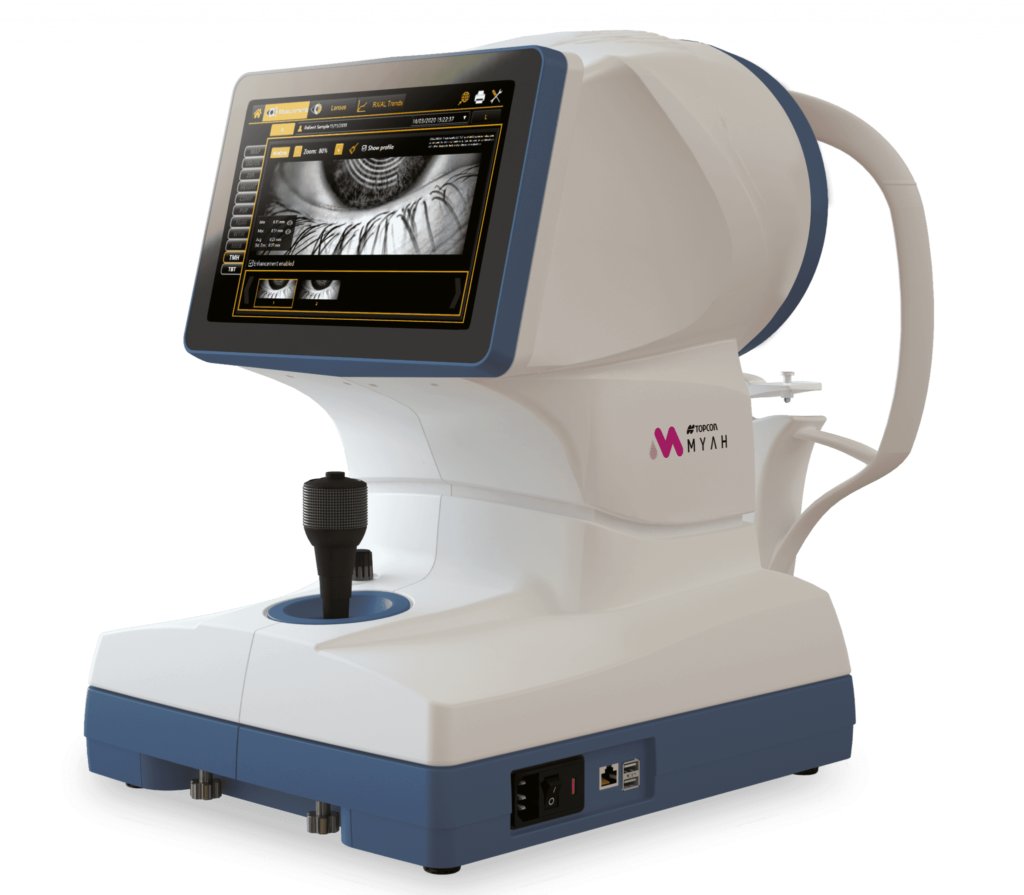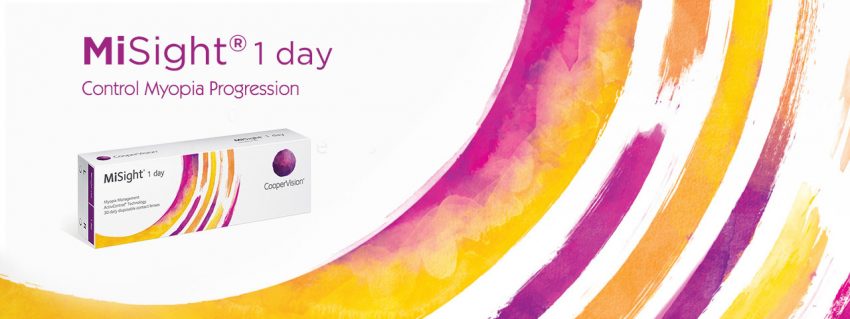WHY MYOPIA CONTROL?
If your child has myopia (nearsightedness), most likely they will need stronger eyeglasses year after year.
The more nearsighted someone is, the thicker their eyeglasses are and high levels of myopia puts patients at risk of early cataracts, glaucoma and detached retinas.
There are several types of treatments that have shown promising results for controlling myopia. Myopia Control may also be an option for young adults who are still experiencing changes in their prescription.
Myopia Control are treatments that are intended to slow the progression of myopia (nearsightedness).
These treatments can induce changes in the structure and focusing of the eyes to reduce stress and fatigue associated with the development and progress of nearsightedness. The younger one starts, the better the outcome.
Consider treating your child’s myopia as soon as possible
How we Evaluate Myopia
- Corneal Tyopgraphy
- Axial Length Measurements

The MYAH is a versatile instrument, including optical biometry, corneal topography, pupillometry, anterior cornea wavefront analysis, and contact lens fitting tool. It is a comprehensive device for monitoring axial length, evaluating the corneal surface, assessing visual quality, and fitting specialty lenses. Analysis tools plot changes in axial length, refraction, and corneal power; highlight differences in corneal shape between visits; and map higher-order aberrations.
As the eye increases in length, our lens prescription increases, and there’s a greater risk of ocular diseases (e.g., glaucoma, cataracts, macular degeneration). Rapid myopia progression in children is due to excessive eye elongation.
Therefore, to monitor the effectiveness of myopia management treatments, axial length measurements are charted at each follow-up visit, which serves as the standard of care for our myopia management program. For Ortho-k lens patients, the axial length is the primary measure used to evaluate myopia progression.
Slowing the Progression of Nearsightedness Starts Here
Ways we can help slow the progress of Myopia:
- CRT Ortho-K Lens
- MiSight 1 Day Contact Lenses
- Multifocal Glasses
- Multifocal Contact Lenses
- Atropine Eye Drops
What are MiSight 1 Day Contact Lenses?

MiSight®1 day contact lenses are the first and ONLY soft contact lenses that are FDA approved to slow the progression of myopia in children 8-12 years of age at initiation of treatment.
Start managing your child’s myopia today
- The First and Only. MiSight® 1 day is the first and only FDA-approved* soft contact lens to slow the progression of myopia in children aged 8 -12 at the initiation of treatment.
- Clinically Proven and Safe. Over a 3-year period, slowed myopia progression 59% on average, reduced eye lengthening by 52% on average, and 41% of eyes had no progression. Over a 6-year period, children wearing MiSight 1 day progressed less than 1.00D on average.
- Parent-Approved. 90% of parents whose children wore MiSight® 1 day contact lenses reported that their children were happy wearing MiSight® 1 day lenses.
- Child Friendly. After using MiSight® 1 day contact lenses for three years, 90% of children still strongly preferred them over their glasses.
FDA-approved
MiSight® 1 day contact lenses are FDA-approved* to slow the progression of myopia in children 8 to 12 years of age at initiation of treatment. That means that they’ve been comprehensively tested over an extended period and have met all of the safety criteria required by the Food and Drug Administration (FDA).
Clinical Data
The testing of MiSight® 1 day lenses consisted of a three-year clinical study in children 8-12 years old at the time they began treatment for myopia. Half of these children wore MiSight® 1 day contact lenses and the other half wore traditional 1 day soft contact lenses. This way, we could see if MiSight® 1 day really made a difference. And they did. The progression of myopia slowed in 41% of children who wore MiSight® 1 day contact lenses as compared to those who didn’t.
